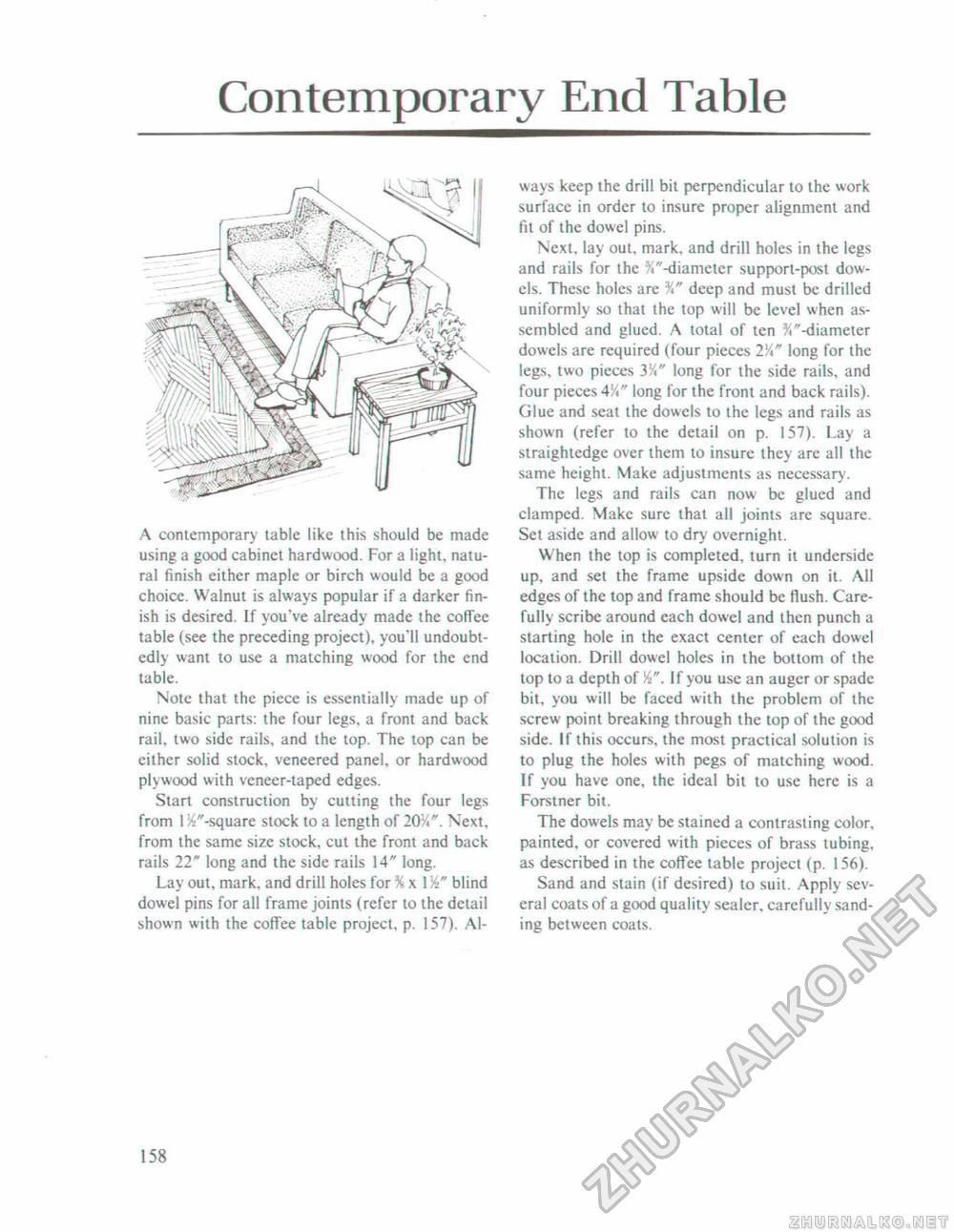Woodworker's Journal 101-Projects-for-Woodworkers, страница 165
Contemporary End TableA contemporary table like this should be made using a good cabinet hardwood. For a light, natural finish either maple or birch would be a good choice. Walnut is always popular if a darker finish is desired. If you've already made the coffee table (see the preceding project), you'll undoubtedly want to use a matching wood for the end table. Note that the piece is essentially made up of nine basic parts: the four legs, a front and back rail, two side rails, and the top. The top can be cither solid stock, veneered panel, or hardwood plywood with veneer-taped edges. Start construction by cutting the four legs from 1 Vi"-square stock to a length of 20Vi". Next, from the same size stock, cut the front and back rails 22" long and the side rails 14" long. Lay out, mark, and drill holes for % x ! blind dowel pins for all frame joints (refer to the detail shown with the coffee table project, p. 157). Al ways keep the drill bit perpendicular to the work surface in order to insure proper alignment and fit of the dowel pins. Next, lay out, mark, and drill holes in the legs and rails for the ^"-diameter support-post dowels. These holes are ft" deep and must be drilled uniformly so that the top will be level when assembled and glued. A total of ten V-diameter dowels are required (four pieces 2H" long for the legs, two pieces 3K" long for the side rails, and four pieces 4%" long for the front and back rails). Glue and seat the dowels to the legs and rails as shown (refer to the detail on p. 157). Lay a straightedge over them to insure they are alf the same height. Make adjustments as necessary. The legs and rails can now be glued and clamped. Make sure that all joints are square. Set aside and allow to dry overnight. When the top is completed, turn it underside up. and set the frame upside down on it. All edges of the top and frame should be Hush. Carefully scribe around each dowel and then punch a starting hole in the exact center of each dowel location. Drill dowel holes in the bottom of the top to a depth of W. If you use an auger or spade bit, you will be faced with the problem of the screw point breaking through the top of the good side, if this occurs, the most practical solution is to plug the holes with pegs of matching wood. If you have one, the ideal bit to use here is a Forstner bit. The dowels may be stained a contrasting color, painted, or covered with pieces of brass tubing, as described in the coffee table project (p. 156). Sand and stain (if desired) to suit. Apply several coats of a good quality sealer, carcfully sanding between coats. 158 |








